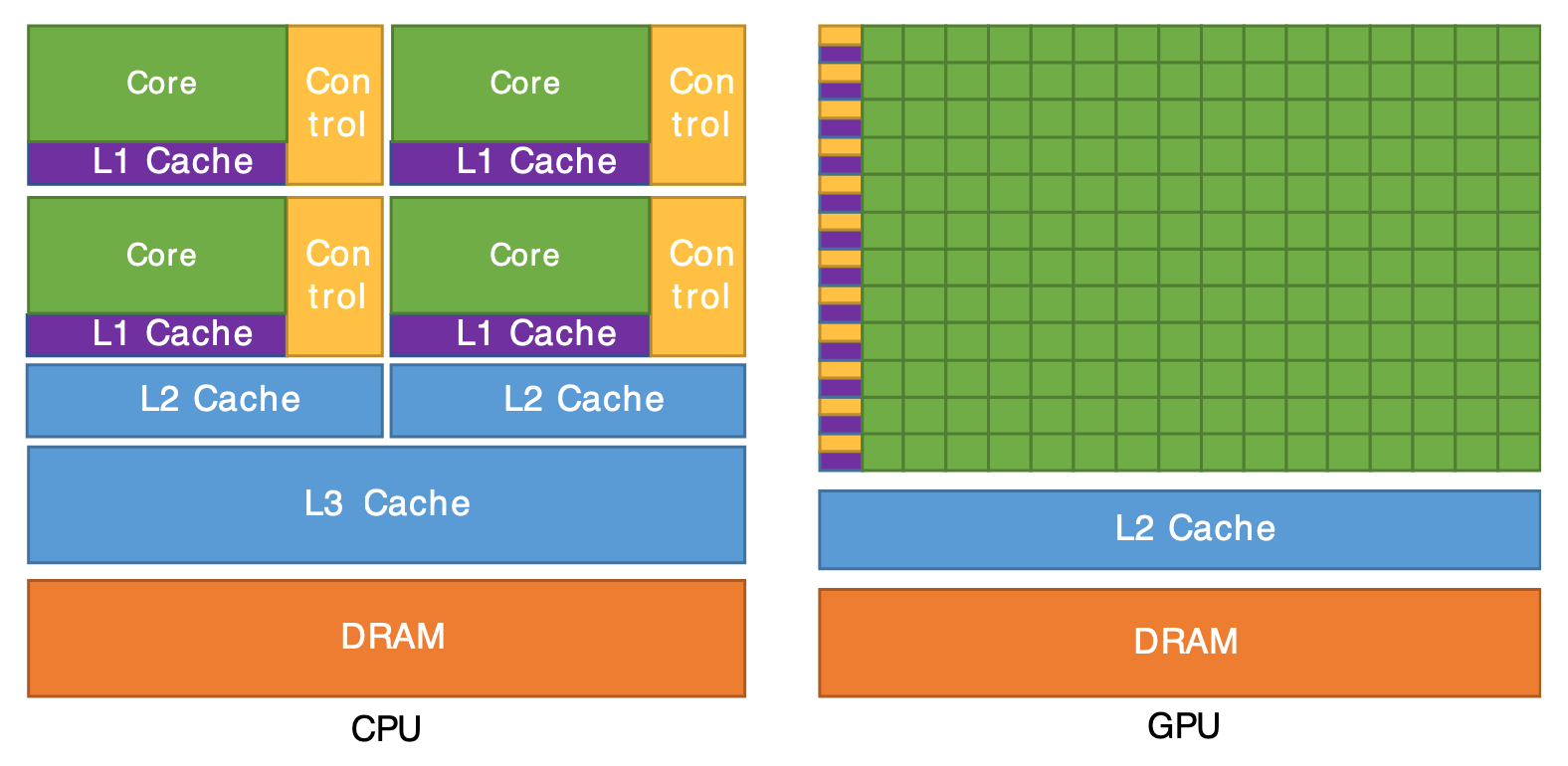Design: GPU vs. CPU
GPUs were originally designed to render graphics. They work very well for shading, texturing, and rendering the thousands of independent polygons that comprise a 3D object. CPUs, on the other hand, are meant to control the logical flow of any general-purpose program, where lots of number crunching may (or may not) be involved. Due to these very different roles, GPUs are characterized by many more processing units and higher aggregate memory bandwidth, while CPUs feature more sophisticated instruction processing and faster clock speed.
The figure below illustrates the main differences in hardware architecture between CPUs and GPUs. The transistor counts associated with various functions are represented abstractly by the relative sizes of the different shaded areas. In the figure, green corresponds to computation; gold is instruction processing; purple is L1 cache; blue is higher-level cache, and orange is memory (DRAM, which should really be thousands of times larger than the caches).

This diagram, which is taken from the CUDA C++ Programming Guide (v.11.2), does not depict the actual hardware design of any particular CPU or GPU. However, based on the size, color, and number of the various blocks, the figure does suggest that:
- CPUs can handle more complex workflows compared to GPUs.
- CPUs don't have as many arithmetic logic units or floating point units as GPUs (the small green boxes above, roughly speaking), but the ALUs and FPUs in a CPU core are individually more capable.
- CPUs have more cache memory than GPUs.
A final point is that GPUs are really designed for workloads that can be parallelized to a significant degree. This is indicated in the diagram by having just one gold control box for every row of the little green computational boxes.
CVW material development is supported by NSF OAC awards 1854828, 2321040, 2323116 (UT Austin) and 2005506 (Indiana University)